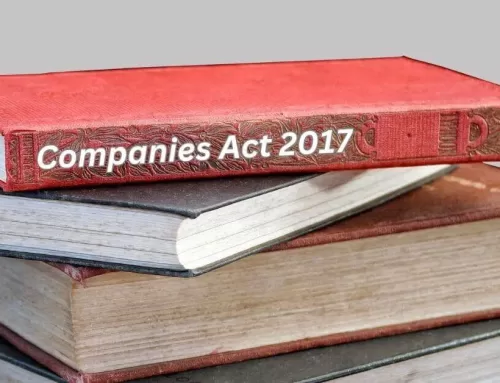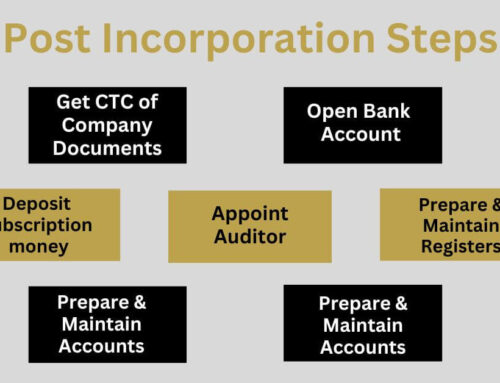What are the Articles of Association?
Articles of association (acronym “AOA”) or bylaws are the rules and regulations to regulate the internal affairs of the company. This is an agreement between a company and its subscribers and shareholders. Subject to law a company has to conduct its business as per its articles of association. A company cannot do anything which is not allowed under the articles. It may be termed as a manual for the company to conduct its business lawfully.
The articles of association include information on the rights of shareholders as well as an outline of the managerial and administrative framework and activities of the company.
Articles of Association – Defined by Companies Act 2017
The company law in Pakistan defines the articles as;
“the articles of association of a company framed in accordance with the company law or this Act”
The law guides what the articles should contain and how they are framed. The law also provides for the registration requirements of the articles of association for a company.
Importance of Articles of Association
AOA is one of the constitutive documents of a company. In contrast to the memorandum of association that builds the main structure of a company, the articles of association provide details on how the company will run its affairs. As a manual for the internal operations of the company under the company law, AOA provides details of the relations between the company and the shareholders and between the shareholders inter se.
Limitations of the Articles of Association
Though the Articles of Association is a foundational document, it’s not absolute. The provisions of the articles have limitations and must remain within the legal bounds. The following limitations or restrictions may apply to the articles of association. The articles of association must:
- not to conflict with the company law
- not to conflict with general law and public policy
- not violate a government or court order
- not be framed to defraud its members or other persons
- not lead to a breach of contract
must not raise the members’ liability unless the company is an unlimited company.
What are the Common Contents of the Articles of Association?
Although, the contents of AOA may vary from company to company, keeping in view the nature of the company but they generally include:
Shares and Transmission of Shares
Since the articles of association govern the relationship between the company and its shareholders, it must contain provisions related to classes and kinds of shares a company may issue. Generally, new shares must be offered to existing shareholders proportionately, and upon their refusal shares may be issued to outsiders.
The AOA must also include how the shares are issued and on what terms and conditions the company will issue the shares. Subject to law, the company may also prescribe timelines for the issuance of shares.
Next comes the transfer or transmission of shares. In the relevant clause, the company may, subject to the law of the land, prescribe the procedure for the transfer or transmission of shares. The articles generally provide the format of the transfer deed and application procedure for the transmission of shares.
The articles may also provide for the powers of the board to approve the transfer and transmission of shares under the law and specific requirements of the company, if any.
Alternation of Capital
The articles of a company may also provide for the procedure for alteration of capital like an increase in authorized capital, consolidation or division of capital, and cancellation of shares. A company, subject to law may change the denomination (increase or decrease the face value) of its shares or a particular kind or class of shares. The change in the value of shares may require certain procedures to be followed before it can be done.
Management of the Company
The overall management of the company is vested with the board of directors. Therefore, the articles may contain provisions related to the election of directors, and filling casual vacancies in the board. The articles may also provide for the powers, duties, and responsibilities of the directors of the company.
General Meetings of the Company
The articles of association normally provide for the procedure of calling general meetings of the company. The articles may subject to law, provide for the quorum for a general meeting of the company. The articles may also contain provisions related to notices to the members and procedures to attend the meetings in person or through proxy. In such a case the articles may also provide a format of proxy instrument and time to file the notice to the company about the proxy.
Further, the articles may also provide the procedure for voting at the general meetings, through a show of hands or poll, if demanded.
Meetings of the Board of Directors
In addition, the articles also provide for the procedure for calling meetings of the board of directors and quorum for the meetings. The articles also contain provisions related to the mode of presentation to the board and the procedure for passing resolutions.
Minutes of General and Board Meetings
The articles of association may also include provisions related to the preparation, circulation, and approval of minutes of the meetings. It may also include how the record of minutes and resolutions of the board and company meetings is maintained.
Declaration of Dividends and Reserves
The articles may also include the procedure for the declaration of dividends, entitlement, and procedure for disbursement of dividends. Further, the articles may include clauses related to reserves out of the profits of the company to meet contingencies and expansion plans.
Maintenance of Accounts and Audit
The articles of association may also include clauses related to the preparation and maintenance of accounts by a company. The provisions may contain guidelines on how the accounts are presented to the board and the members in general meetings.
The articles of association may, if required under the law, also contain provisions related to appointment, remuneration, and removal of the auditors of the company.
Alteration of Articles of Association
A company with changing circumstances and if required by law may change the provisions of its articles when needed. A company may alter its articles of association by adopting the legal procedure to make suitable changes. Specific changes may also require regulatory approvals in addition to the support of a vast majority of the members under the law.
Conclusion
The articles of association of a company as a formational document need to be filed with and registered with the registrar of the companies. It expands the scope of the memorandum of association by providing details about the internal working of the company. If needed the articles may be changed under the law.





























Leave A Comment